$249.99
Discover unique shell patterning and beautiful black leopard spots on these 2-2.5 inch baby leopard tortoises. Find your perfect exotic pet today.
Baby Leopard Tortoise: A Comprehensive Guide for Enthusiasts
The baby leopard tortoise for sale (*Stigmochelys pardalis*) is one of the most captivating and beautiful species of tortoise, known for its striking, leopard-like shell patterns. Native to the dry savannahs and grasslands of eastern and southern Africa, this species has become a popular choice for reptile enthusiasts due to its manageable size, attractive appearance, and docile temperament. Whether you’re looking for a **baby leopard tortoise** or interested in learning more about **leopard tortoises for sale**, this guide will provide all the information you need to make an informed decision.
In this comprehensive article, we will delve into the natural habitat, diet, care, and unique characteristics of the leopard tortoise. We’ll also explore the costs associated with owning one, including **leopard tortoise price** variations, and provide essential tips for keeping them happy and healthy in captivity. If you’re considering adding a leopard tortoise to your reptile collection or simply want to learn more about these fascinating creatures, you’ve come to the right place.
Natural Habitat of the Leopard Tortoise
Leopard tortoises are native to a wide range of environments across Africa, particularly in the savannahs and grasslands of South Africa, Kenya, Ethiopia, and Somalia. In the wild, they thrive in hot, arid climates, where they forage for a variety of grasses, plants, and fruits. These tortoises are well adapted to withstand both the heat of the day and the cooler temperatures at night.
Their natural environment is a key factor in their care requirements when kept in captivity. Replicating their natural habitat as closely as possible is important to ensure they remain healthy and happy. This includes providing ample space for them to roam, a warm and dry climate, and a diet that mimics what they would eat in the wild.
Physical Characteristics of the Leopard Tortoise
The **leopard tortoise** is one of the largest tortoise species, with adults typically growing between 10 to 18 inches in length, although some individuals can reach up to 24 inches. Their weight can range from 30 to 50 pounds, with some exceptional specimens tipping the scales at 70 pounds. Despite their large size, they are relatively slow-growing, especially during their early years.
What truly sets the leopard tortoise apart is its beautiful, high-domed shell. The shell is adorned with intricate, yellow or tan patterns resembling the spots of a leopard, hence the name. These spots can vary greatly between individuals, making each tortoise unique. As the tortoise ages, the shell’s color may darken, but it retains its distinctive patterning.
### Behavior and Temperament
Leopard tortoises are known for their calm and docile nature, making them a great choice for both beginner and experienced tortoise keepers. They are not aggressive and generally enjoy interacting with their keepers, though they prefer a gentle approach. Unlike some other tortoise species, leopard tortoises are less likely to hide away in their shell when approached, which makes them more engaging pets.
However, it’s essential to remember that tortoises, in general, are solitary creatures in the wild. While they may tolerate the presence of humans or other tortoises, they do not typically seek out companionship. It’s also important to note that leopard tortoises are quite active during the day and will spend much of their time roaming their enclosure, searching for food, and basking in the sun.
Diet and Nutrition
Leopard tortoises are herbivores, with a diet primarily consisting of grasses and leafy greens. In the wild, they graze on a variety of fibrous plants, which helps keep their digestive system healthy. When keeping a leopard tortoise in captivity, it’s essential to replicate their natural diet as closely as possible. Some of the best foods to offer include:
– **Grasses**: Bermuda grass, timothy hay, and other fibrous grasses should make up the bulk of their diet.
– **Leafy greens**: Collard greens, mustard greens, and dandelion greens are excellent choices.
– **Vegetables**: Occasionally, you can offer vegetables like squash and carrots, but these should only make up a small portion of their diet.
– **Fruits**: While they enjoy the occasional fruit, such as apples or strawberries, fruits should only be given sparingly as treats due to their high sugar content.
Calcium is an essential part of the leopard tortoise’s diet, as it helps maintain strong bones and shell health. To ensure they get enough calcium, it’s recommended to dust their food with a calcium supplement a few times a week. Additionally, providing a cuttlebone in the enclosure allows them to gnaw on it as needed.
**Water** is another important aspect of their care. Leopard tortoises need access to fresh water at all times, and they may enjoy soaking in a shallow dish of water occasionally. Soaking is especially important for **baby leopard tortoises**, as it helps them stay hydrated and maintain healthy skin.
Housing a Leopard Tortoise
Leopard tortoises are relatively easy to care for when it comes to housing, but they do require ample space to roam and a warm environment that mimics their natural habitat. There are two main options for housing a leopard tortoise: indoor enclosures and outdoor enclosures.
#### Indoor Enclosures
For those living in cooler climates or without access to outdoor space, an indoor enclosure is a suitable option. However, due to their large size, adult leopard tortoises need a spacious area to move around. A minimum enclosure size of 8 feet by 4 feet is recommended for a single adult tortoise.
The substrate in the enclosure should be a mixture of topsoil and play sand, which allows the tortoise to dig and burrow as it would in the wild. You can also use coconut coir or cypress mulch to help maintain humidity levels. Leopard tortoises prefer a warm and dry environment, so keeping humidity levels between 40-50% is ideal.
Lighting is crucial for an indoor setup, as leopard tortoises need access to **UVB light** to synthesize vitamin D3 and properly absorb calcium. Without UVB exposure, they can develop metabolic bone disease, which weakens their bones and shell. A UVB light should be provided for 10-12 hours a day, along with a basking area that reaches temperatures of 90-95°F.
Outdoor Enclosures
If you live in a warm climate, an outdoor enclosure is the best option for your leopard tortoise. Outdoor enclosures provide natural sunlight, which is the best source of UVB light, and allows the tortoise to graze on grass and other plants as it would in the wild.
The outdoor enclosure should be secure and predator-proof, with sturdy walls to prevent the tortoise from escaping. Leopard tortoises are known for their curiosity and strength, so the walls should be at least 12 inches high and buried a few inches into the ground to prevent digging.
Within the outdoor enclosure, provide plenty of areas for shade and hiding, such as large rocks, plants, or logs. It’s also essential to have a shallow water dish available for drinking and soaking. While leopard tortoises prefer dry environments, they do need access to water to stay hydrated.
Health and Common Issues
Leopard tortoises are generally hardy animals, but they can be prone to certain health issues if not properly cared for. Some of the most common health problems include:
– **Respiratory infections**: These can occur if the tortoise is kept in a damp or cold environment. Symptoms include wheezing, nasal discharge, and lethargy. Ensuring proper temperatures and humidity levels can help prevent respiratory infections.
– **Metabolic bone disease (MBD)**: MBD is caused by a lack of calcium or UVB exposure, leading to weak bones and a soft shell. Providing access to UVB light and a calcium-rich diet can prevent this condition.
– **Pyramiding**: This is a shell deformity caused by excessive protein or improper humidity levels, leading to the tortoise’s shell growing in a pyramid shape. A proper diet and maintaining correct humidity levels can help prevent pyramiding.
– **Shell rot**: Shell rot is a bacterial or fungal infection that affects the tortoise’s shell, often caused by damp or unsanitary conditions. Regularly cleaning the enclosure and monitoring humidity levels can help prevent this issue.
– **Parasites**: Leopard tortoises can be susceptible to internal parasites, especially if they come from unsanitary environments. Regular fecal exams by a veterinarian can help detect and treat any parasites.
### Breeding and Gender Differences
If you’re interested in breeding leopard tortoises, it’s essential to be able to differentiate between males and females. Males generally have longer tails and a more concave plastron (the bottom part of the shell), while females have shorter tails and a flatter plastron.
Breeding typically occurs during the warmer months, with females laying eggs in a shallow burrow. The eggs should be incubated at a temperature of 82-88°F, and they will hatch after 100-120 days. It’s important to ensure that the eggs are incubated in a humid environment to prevent them from drying out.
**Baby leopard tortoises** are delicate and require special care, especially during their first few months of life. They need a warm and humid environment to thrive, and regular soaking helps them stay hydrated. Offering a varied diet with plenty of calcium is crucial for their healthy development.
Leopard Tortoise for Sale: What to Expect
When searching for a **leopard tortoise for sale**, it’s essential to buy from a reputable breeder or seller. Prices for leopard tortoises can vary depending on their size, age, and availability. **Baby leopard tortoises for sale** typically cost between $150 to $300, depending on their health, lineage, and the breeder’s reputation. **Adult leopard tortoises** tend to be more expensive, ranging from $400 to $1,000 or more, depending on factors such as size, age, and shell pattern. The **leopard tortoise price** can also be influenced by the specific locality or subspecies, with some rarer types fetching higher prices due to their unique appearance or limited availability.
Before purchasing a leopard tortoise, it’s essential to ensure that the breeder or seller is reputable. Look for sellers who are experienced in tortoise care and provide proper documentation of the tortoise’s health. Avoid purchasing tortoises from individuals who cannot provide information about the animal’s history, diet, or health care. Responsible breeders will also offer guidance on how to care for your new tortoise, including diet, housing, and health maintenance. It’s also a good idea to ask about the conditions in which the tortoises were raised, as this can significantly impact their long-term health. Reputable breeders will provide information about the tortoise’s lineage and care practices, ensuring you’re purchasing a well-cared-for and healthy animal.
When looking for a **leopard tortoise for sale**, it’s crucial to prioritize health over price. While the **leopard tortoise price** may vary, cheaper options could come from poor conditions or unethical breeders. Investing in a well-raised, healthy tortoise from a reputable source will pay off in the long run, ensuring that your new pet lives a long and healthy life.
Ethical Considerations When Buying a Leopard Tortoise
It’s important to approach purchasing any tortoise species, including leopard tortoises, with an understanding of ethical and environmental considerations. Unfortunately, some tortoises, particularly those captured in the wild, are sold through illegal or unethical means. These animals are often taken from their natural habitats in unsustainable numbers, which can have detrimental effects on wild populations.
When buying a **baby leopard tortoise** or adult tortoise, make sure to buy from breeders who specialize in captive-bred tortoises. Captive breeding helps protect wild populations and ensures the tortoises are acclimated to a life in captivity. Always ask the seller if the tortoise is captive-bred and avoid sellers who cannot provide clear documentation.
Additionally, wild-caught tortoises are more likely to carry diseases or parasites and can be more challenging to acclimate to captive conditions, which can lead to stress or early death. Supporting the ethical sale of **leopard tortoises for sale** helps protect wild populations and ensures you are contributing to responsible tortoise ownership.
Preparing for Your New Leopard Tortoise
Once you’ve decided to bring a leopard tortoise into your home, it’s essential to prepare the enclosure and supplies before your new pet arrives. Leopard tortoises, especially as babies, need a well-thought-out environment that mimics their natural habitat as much as possible.
Start by setting up the enclosure—whether indoors or outdoors—with the correct substrate, heat, lighting, and humidity levels. If you’re housing your tortoise indoors, make sure to purchase a UVB light and heat lamps, and arrange the enclosure to allow your tortoise space to roam, dig, and bask. An outdoor enclosure will need secure fencing, access to shade, and areas for grazing.
Before bringing a **baby leopard tortoise** home, stock up on the proper food, such as grasses and leafy greens, and ensure you have calcium supplements on hand. You’ll also want to schedule an initial veterinary check-up to ensure your tortoise is healthy and free of parasites.
The Long-Term Commitment of Leopard Tortoise Care
Leopard tortoises can live for 50 years or more with proper care, making them a long-term commitment. As you plan for the future, it’s essential to consider their long lifespan and the resources required to keep them healthy and comfortable for decades. Regular veterinary check-ups, proper nutrition, and a spacious enclosure are critical aspects of long-term tortoise care.
Additionally, because leopard tortoises can grow to a significant size, their housing requirements may change as they age. While **baby leopard tortoises** may be fine in smaller indoor enclosures, adults may eventually require larger outdoor pens, especially in warmer climates. Be prepared for the possibility that your tortoise’s needs will evolve over time.
Why Choose a Leopard Tortoise?
Leopard tortoises are among the most sought-after tortoise species for several reasons. Their striking appearance, calm demeanor, and manageable size (compared to larger species like sulcata tortoises) make them an ideal choice for reptile enthusiasts. Additionally, they are relatively easy to care for, as long as their housing and dietary needs are met.
For families or individuals who enjoy reptiles and have the space and resources to care for a long-living pet, the leopard tortoise can be a wonderful addition. Watching a leopard tortoise graze, bask, and explore its enclosure can be a rewarding experience, and their docile temperament makes them an enjoyable companion to care for.
If you’re looking for a pet with a slower pace of life, one that requires patience, time, and attention to detail, a **leopard tortoise** may be the perfect choice for you.
Conclusion
The **leopard tortoise** is a captivating and rewarding pet that can bring joy and fascination to your home for many years. Whether you’re looking for a **baby leopard tortoise for sale** or interested in purchasing an adult, understanding the care and ethical considerations involved is key to providing a happy, healthy life for your tortoise.
With the right diet, housing, and health care, a leopard tortoise can live a long and fulfilling life, becoming a cherished part of your family. By purchasing from reputable breeders, you ensure the well-being of your pet while supporting responsible and ethical tortoise ownership.
Before you make the commitment, remember that a leopard tortoise is a long-term responsibility that requires ongoing care and attention. But for those willing to invest the time and resources, these beautiful, peaceful creatures can be an immensely satisfying pet that will be with you for decades to come.
Be the first to review “Baby Leopard Tortoise for Sale – Captive Bred Exotic Pets” Cancel reply
Related products
TORTOISE for sale
TORTOISE for sale
Pancake Tortoise for Sale – Exotic Pets with Unique Flat Shells
TORTOISE for sale
TORTOISE for sale
Northern Zombensis Hingeback Tortoise for Sale – Exotic Pet Option
TORTOISE for sale
TORTOISE for sale
TORTOISE for sale
Yellowfoot Tortoise for Sale – Find Exotic Pets for Sale | 8-13 Inches
TORTOISE for sale
Baby Marginated Tortoise for Sale – Adopt the Perfect Exotic Pet

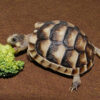




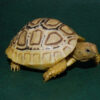
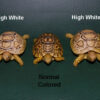

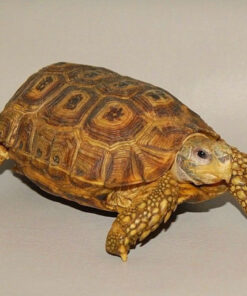

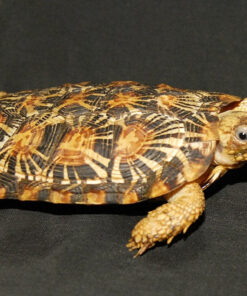
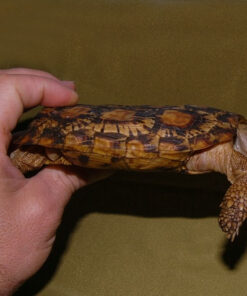
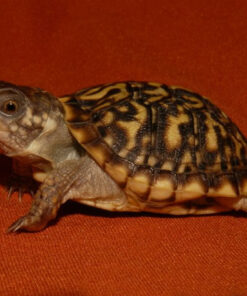

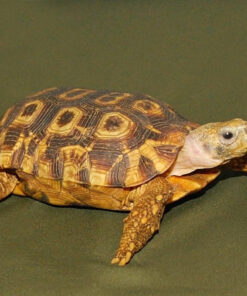

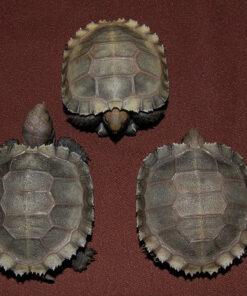
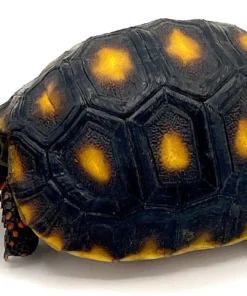
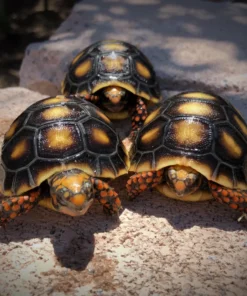
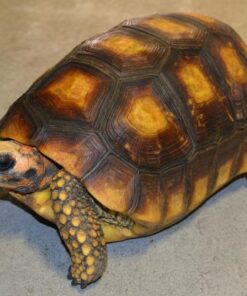
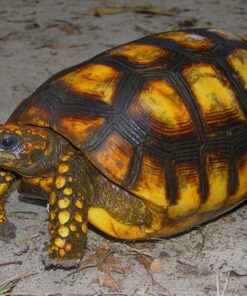
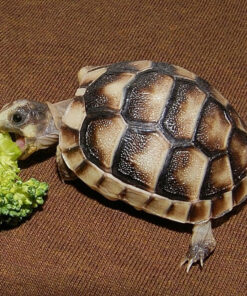
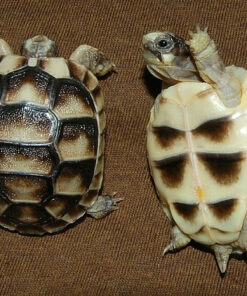
Reviews
There are no reviews yet.